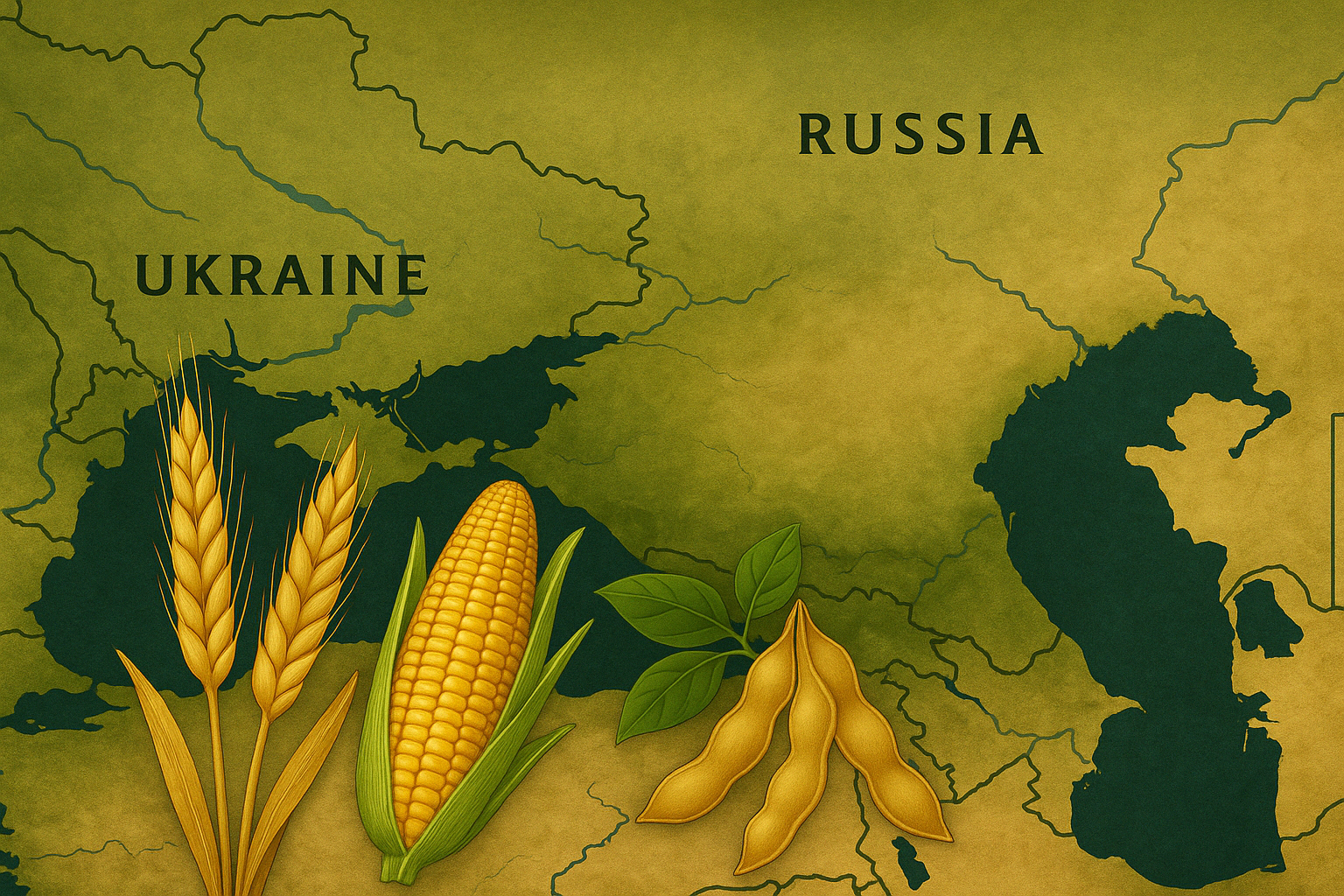The Black Sea grain market is currently navigating a volatile intersection of agronomic optimism and structural market pressures. As the 2025/26 marketing year approaches, key players such as Ukraine, Russia, and Romania are confronting rapidly changing conditions shaped by weather patterns, shifting trade alliances, and the strategic redirection of export logistics. While weather has turned more favorable in recent weeks, regulatory uncertainty and subdued pricing continue to weigh on producer sentiment.
Weather Patterns and Crop Outlook
Rainfall across southwestern Russia and Ukraine in May brought crucial relief after a cold and dry early spring. These rains have improved soil moisture and helped stabilize crop development, particularly for winter wheat and corn. Ukrainian agronomists report that current conditions support active fieldwork, and recent temperature increases into the 20–22°C range, coupled with ongoing precipitation, bode well for upcoming crop stages.
However, spring frost events and earlier harsh weather have already damaged portions of Ukraine’s winter crops, especially rapeseed and wheat. Replanting efforts are underway, with many farmers shifting toward sunflower and corn as conditions permit. Meanwhile, drier regions of central Asia and eastern Russia remain vulnerable, increasing reliance on favorable weather in June to offset earlier losses.
Trade and Logistics Pressures
Beyond the fields, political and logistical constraints are reshaping the flow of grain from the Black Sea region. The European Union is currently evaluating the reintroduction of trade barriers on Ukrainian agricultural imports. For Ukraine, whose western exports have relied heavily on EU market access since the war began, any new quota or duty could limit short-term competitiveness and reroute trade toward more volatile destinations.
Moldova is quietly gaining relevance as a logistics corridor. With strategic proximity to Ukraine, Romania, and EU border infrastructure, Moldova is emerging as a viable route for grain exports—especially as Danube ports absorb more volumes. The region's shifting logistical map may prove essential in maintaining outbound grain flow if traditional routes face further regulatory or capacity constraints.
Pricing Trends and Producer Sentiment
Domestic grain prices in Ukraine have come under pressure in recent weeks. As the 2025 harvest draws closer and forward selling picks up, local prices have softened, particularly for feed wheat and sunflower seed. While current crop development remains largely stable, global demand for lower-grade grains is sluggish, and export margins are tightening.
Nevertheless, forward prices for rapeseed remain buoyant—hovering $80–90 per ton above last year’s levels—supported by lower EU production forecasts and dryness in Australia and China. Soybean sowing is also progressing rapidly in Ukraine, while sunflower planting has been slow, recording its slowest pace since 2020. These trends reflect changing farmer preferences in light of shifting crop economics and field conditions.
Corn’s Rising Role
Corn is quickly emerging as Ukraine’s key recovery crop this season. With robust soil moisture, replanted acreage, and growing export interest, market observers are cautiously optimistic. Recent changes to Turkey’s import policy have opened a temporary window for Ukrainian corn through quota-based access, although long-term trade prospects will still depend on broader market dynamics and sustained Chinese demand.
Farmers across Ukraine have expanded corn acreage in response to earlier losses in winter crops. If favorable weather persists, Ukraine could reclaim its position as a top corn exporter, even as global competition intensifies.
Romania’s Agritech Approach
Romania’s grain sector continues to prioritize innovation as it faces the dual challenges of climate volatility and rising input costs. In Brăila, the large-scale farm Agricost is relying on Corteva’s Verben™ fungicide—a blend of proquinazid and prothioconazole—as a cornerstone for wheat protection. This strategy has yielded consistently healthy foliage and stable returns despite unpredictable spring weather.
The Romanian case underscores a broader evolution in the region: success is no longer dictated solely by acreage or rainfall but increasingly by integrated agronomic technology and adaptive decision-making.
Wheat Under Pressure, Corn Leading the Way
While weather conditions have stabilized and production forecasts for Russian wheat were recently raised to 81 MMT by SovEcon, the export picture remains sluggish. Russian wheat exports are down 63% year-on-year for May, totaling just 1.214 MMT between May 1–20. Port congestion, limited trader activity, and geopolitical uncertainties continue to suppress outbound volumes.
Corn, by contrast, presents a more resilient picture. Stronger pricing, improved planting progress, and growing demand—particularly from Asia—position corn as the more bullish crop heading into the second half of the year. The combination of supportive fundamentals and favorable weather outlooks makes corn the key driver of optimism in the region.
Navigating a Season of Shifts
The Black Sea grain market is in a state of cautious adjustment. Ukraine’s agricultural recovery is gaining momentum thanks to improved weather and adaptive replanting, but export logistics and trade policy hurdles continue to loom large. Russia’s wheat outlook is stabilizing on paper, yet its export system remains underperforming. Meanwhile, Romania is showcasing how agritech and innovation can anchor resilience.
As the harvest season nears, volatility will remain a central feature—shaped not only by crop conditions but also by trade flows, input costs, and geopolitical decisions. Corn and oilseeds appear well positioned to lead regional strength, while wheat battles with oversupply and weak demand. The months ahead will test the agility and coordination of every link in the Black Sea grain chain.

